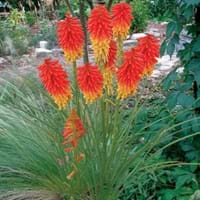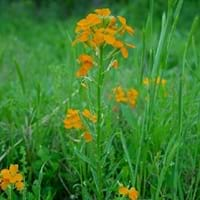Life Span
Perennial
Annual and Perennial
Type
Perennial
Tender Perennial
Origin
Hybrid origin
Southern Europe, Mediterranean
Types
Not Available
Not Available
Habitat
Damp Places, Marshy ground
gardens, Grassland, Prairies
USDA Hardiness Zone
6-9
7-9
Sunset Zone
2a, 2b, 3a, 3b, 4, 5, 6, 7, 8, 9, 14, 15, 16, 17, 18, 19, 20, 21, 22, 23, 24
4, 5, 6, 14, 15, 16, 17, 18, 19, 20, 21, 22, 23, 24
Habit
Clump-Forming
Mat-forming
Flower Color
Yellow, Red, Orange, Pink
Light Yellow
Flower Color Modifier
Bicolor
Bicolor
Fruit Color
Not Available
Green
Leaf Color in Spring
Green, Blue Green
Gray Green
Leaf Color in Summer
Green, Blue Green
Gray Green
Leaf Color in Fall
Blue Green, Gray Green, Light Yellow
Gray Green
Leaf Color in Winter
Light Green
Light Green
Plant Season
Spring, Summer
Spring, Summer, Fall, Winter
Sunlight
Full Sun, Partial Sun
Full Sun, Partial Sun
Type of Soil
Clay, Loam, Sand
Loam, Sand
The pH of Soil
Acidic, Neutral
Neutral, Alkaline
Soil Drainage
Well drained
Well drained
Bloom Time
Early Summer, Summer
Spring, Late Spring, Early Summer, Summer, Late Summer, Early Fall
Tolerances
Drought
Drought
Where to Plant?
Container, Ground
Container, Ground, Pot
How to Plant?
Divison, Seedlings
Seedlings, Stem Cutting
Plant Maintenance
Medium
Medium
Watering Requirements
Needs more water during establishment, Water Deeply, Water in morning to avoid prompting diseases, Water in the early morning hours
Allow soil to be completely dry in between waterings, Water Deeply, Water less during winter
In Summer
Lots of watering
Lots of watering
In Spring
Moderate
Moderate
In Winter
Average Water
Average Water
Soil pH
Acidic, Neutral
Neutral, Alkaline
Soil Type
Clay, Loam, Sand
Loam, Sand
Soil Drainage Capacity
Well drained
Well drained
Sun Exposure
Full Sun, Partial Sun
Full Sun, Partial Sun
Pruning
Cut or pinch the stems, Remove damaged leaves, Remove dead branches, Remove dead leaves
Cut or pinch the stems, Do not prune during shooting season, Prune if you want to improve plant shape, Prune prior to new growth, Remove deadheads
Fertilizers
All-Purpose Liquid Fertilizer, Apply N-P-K
All-Purpose Liquid Fertilizer
Pests and Diseases
Onion thrips, Red blotch, Root rot
fungus, Insects, Red blotch
Plant Tolerance
Drought, Moisture
Drought
Flower Petal Number
Single
Single
Foliage Texture
Coarse
Fine
Foliage Sheen
Matte
Matte
Attracts
Snails
Bees, Birds, Butterflies
Allergy
Not Available
Skin irritation
Aesthetic Uses
Borders, Cottage Garden, Ground Cover
Beautification, Showy Purposes
Beauty Benefits
Not Available
Not Available
Environmental Uses
Air purification
Air purification
Medicinal Uses
Not Available
No Medicinal Use
Part of Plant Used
Not Available
Whole plant
Other Uses
Not Available
Showy Purposes
Used As Indoor Plant
No
No
Used As Outdoor Plant
Yes
Yes
Garden Design
Container, Cutflower, Mixed Border, Rock Garden, Wall
Alpine, Container, Edging, Foundation, Groundcover, Mixed Border, Rock Garden / Wall
Botanical Name
KNIPHOFIA 'Border Ballet'
Erysimum capitatum
Common Name
Tritoma, Wisley Blue Spring Starflower, Wisley Blue Springstar
Sanddune Wallflower, Western Wallflower, Prairie Rocket
In Hindi
Tritoma
रेत टिब्बा Wallflower
In German
Tritoma
Sanddüne Wallflower
In French
Tritoma
Sable Dune Wallflower
In Spanish
tritoma
Duna de arena Wallflower
In Greek
tritoma
Sand Dune Wallflower
In Portuguese
Tritoma
Duna Wallflower
In Polish
Tritoma
Wydma Wallflower
In Latin
Trytoma
Sand Dune Wallflower
Phylum
Tracheophyta
Magnoliophyta
Class
Magnoliopsida
Magnoliopsida
Order
Asparagales
Brassicales
Family
Liliaceae
Brassicaceae
Clade
Angiosperms, Monocots
Angiosperms, Eudicots, Rosids
Tribe
Not Available
Not Available
Subfamily
Not Available
Not Available
Number of Species
Not Available
Season and Care of Tritoma and Sanddune Wallflower
Season and care of Tritoma and Sanddune Wallflower is important to know. While considering everything about Tritoma and Sanddune Wallflower Care, growing season is an essential factor. Tritoma season is Spring and Summer and Sanddune Wallflower season is Spring and Summer. The type of soil for Tritoma is Clay, Loam, Sand and for Sanddune Wallflower is Loam, Sand while the PH of soil for Tritoma is Acidic, Neutral and for Sanddune Wallflower is Neutral, Alkaline.
Tritoma and Sanddune Wallflower Physical Information
Tritoma and Sanddune Wallflower physical information is very important for comparison. Tritoma height is 45.70 cm and width 50.80 cm whereas Sanddune Wallflower height is 30.50 cm and width 30.50 cm. The color specification of Tritoma and Sanddune Wallflower are as follows:
Tritoma flower color: Yellow, Red, Orange and Pink
Tritoma leaf color: Green and Blue Green
Sanddune Wallflower flower color: Light Yellow
- Sanddune Wallflower leaf color: Gray Green
Care of Tritoma and Sanddune Wallflower
Care of Tritoma and Sanddune Wallflower include pruning, fertilizers, watering etc. Tritoma pruning is done Cut or pinch the stems, Remove damaged leaves, Remove dead branches and Remove dead leaves and Sanddune Wallflower pruning is done Cut or pinch the stems, Do not prune during shooting season, Prune if you want to improve plant shape, Prune prior to new growth and Remove deadheads. In summer Tritoma needs Lots of watering and in winter, it needs Average Water. Whereas, in summer Sanddune Wallflower needs Lots of watering and in winter, it needs Average Water.





